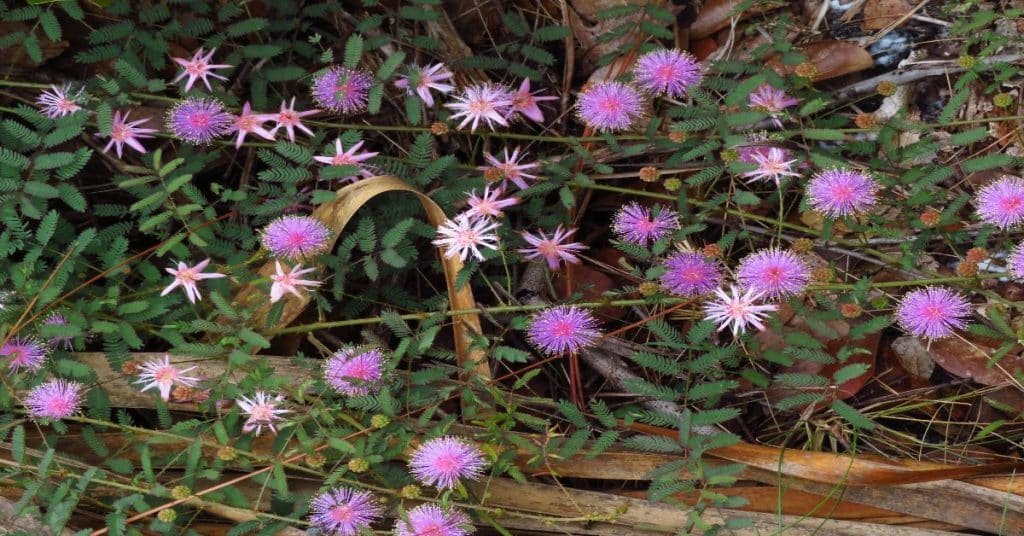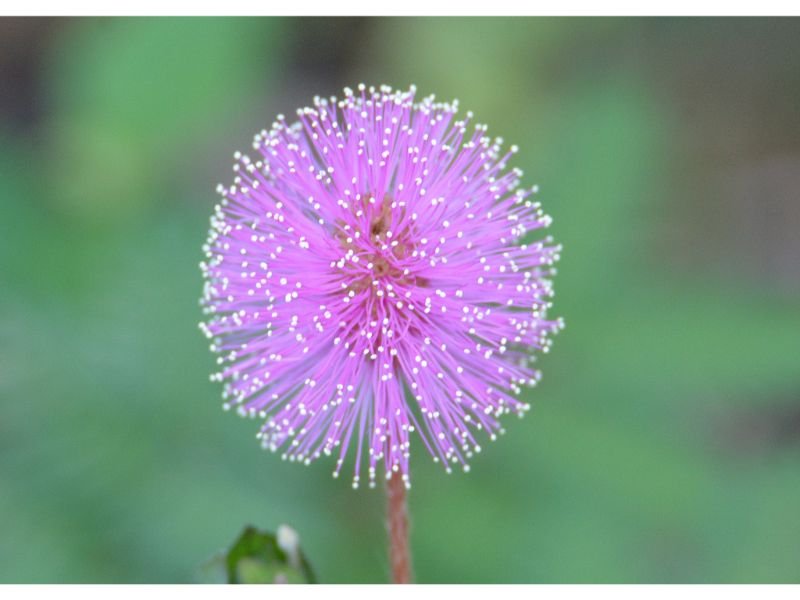In this comprehensive guide, we will delve into the world of Silky Powder Puff (Mimosa strigillosa) care. Whether you are a novice gardener or an experienced plant enthusiast, this article aims to provide you with the necessary knowledge and tips to ensure your Silky Powder Puff thrives in its environment. From ideal growing conditions to maintenance practices, we have got you covered. Let’s jump right in!

Table of Contents
The Silky Powder Puff: An Overview
The Silky Powder Puff, scientifically known as Mimosa strigillosa, is a perennial flowering plant that belongs to the Fabaceae family. It is native to the southeastern regions of the United States and is renowned for its stunning appearance and unique characteristics. The plant derives its name from the soft, silky hairs that cover its leaves and stems, creating a velvety texture that is truly captivating.
Aesthetic Appeal: Beauty in Every Detail
The Silky Powder Puff showcases a mesmerizing display of colors and textures, making it a delightful addition to any garden or landscape. Its fern-like foliage consists of numerous small leaflets, which, when combined with the silky hairs, create a gentle shimmering effect, especially in the sunlight. The plant boasts vibrant pink, puff-like flowers that resemble tiny powder puffs, hence its common name.
Light and Temperature Requirements
Silky Powder Puff plants thrive in full sun to partial shade conditions. They require at least six hours of direct sunlight daily to ensure optimal growth and flowering. When it comes to temperature, these plants prefer warm climates and are best suited for USDA hardiness zones 8 to 11. In colder regions, they can be grown as annuals or potted plants that can be brought indoors during winter.
Soil and Watering Needs
To provide the ideal growing environment for your Silky Powder Puff, use well-draining soil that retains some moisture but does not become waterlogged. Sandy or loamy soils with a slightly acidic to neutral pH (6.0 to 7.0) are recommended. It is important to water the plant regularly, ensuring the soil remains consistently moist but not overly saturated. During hot and dry periods, pay extra attention to watering to prevent drought stress.
Planting and Propagation
When planting your Silky Powder Puff, choose a location that offers adequate sunlight and well-draining soil. Dig a hole slightly larger than the plant’s root ball, place the plant gently into the hole, and backfill with soil, ensuring the base of the plant is level with the surrounding ground. Water thoroughly after planting to promote root establishment.
Propagation of the Silky Powder Puff can be done through seeds or stem cuttings. To propagate from seeds, collect mature pods and extract the seeds. Sow them in a well-prepared seedbed and keep the soil consistently moist until germination occurs. For stem cuttings, take softwood cuttings during the active growing season and root them in a suitable rooting medium, ensuring they receive adequate warmth and humidity.
Pruning and Maintenance
Regular pruning is essential to maintain the health and appearance of your Silky Powder Puff. Prune away any dead or damaged branches, as well as spent flowers, to promote new growth and maintain a tidy shape. Additionally, trim back the plant in early spring to encourage bushier growth and enhance overall vigor. Remember to sanitize your pruning tools before and after each use to prevent the spread of diseases.
Pests and Diseases
While the Silky Powder Puff is generally resistant to pests and diseases, it is still important to remain vigilant and address any issues promptly. Keep an eye out for common garden pests such as aphids, spider mites, and caterpillars. If an infestation occurs, use organic insecticides or neem oil to control the pests effectively. Ensure proper air circulation around the plant and avoid overwatering to prevent the development of fungal diseases.
Tips for Successful Silky Powder Puff Care

To summarize, here are some key tips to ensure the successful care of your Silky Powder Puff:
- Provide ample sunlight: Place your plant in a location that receives at least six hours of direct sunlight daily.
- Use well-draining soil: Choose soil that retains some moisture but allows excess water to drain away.
- Water consistently: Keep the soil consistently moist but avoid overwatering.
- Prune regularly: Trim away dead branches and spent flowers to maintain plant health and shape.
- Watch out for pests and diseases: Monitor your plant for signs of pests or diseases and take appropriate action if needed.
By following these care guidelines, you can enjoy the beauty and charm of the Silky Powder Puff in your garden or landscape for years to come.
Read also our other powder Puff Flowers Care.
Landscaping and Design Ideas
The Silky Powder Puff’s aesthetic appeal makes it an excellent choice for various landscaping and design purposes. Here are some creative ideas to incorporate this enchanting plant into your outdoor spaces:
1. Flowerbeds and Borders
Plant Silky Powder Puff along with other colorful perennials to create vibrant flowerbeds and borders. The contrasting textures and hues will add depth and visual interest to your garden.
2. Container Gardens
Leverage the versatility of the Silky Powder Puff by cultivating it in containers. This allows you to showcase its beauty on patios, balconies, or any other outdoor areas where space is limited.
3. Pollinator Gardens
The Silky Powder Puff’s nectar-rich flowers attract a variety of pollinators, including bees, butterflies, and hummingbirds. Incorporate it into pollinator gardens to support these essential creatures and promote biodiversity.
Conclusion
The Silky Powder Puff (Mimosa strigillosa) is a captivating plant that effortlessly combines beauty and grace. With its velvety foliage, vibrant pink flowers, and unique growth habits, it is sure to become a showstopper in any garden or landscape. By following the cultivation tips outlined in this article, you can create a thriving environment for this delicate beauty to flourish. Embrace the allure of the Silky Powder Puff and experience the magic it brings to your outdoor spaces.

Gardening is my passion and growing plants indoors has always been a stress relief for me. Grow a banana tree in my apartment once (although failed to produce bananas).






